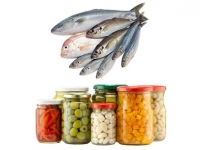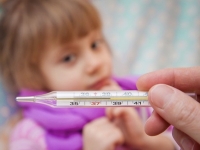allergic rash
What is botulism?
 Botulism is an acute toxic and infectious disease in which severe damage to the human nervous system occurs. The causative agent of botulism is in the intestine of animals, birds, fish, and from there it gets back to the soil and water. Bacteria of botulism, called anaerobes, live exclusively in places where there is no air, and therefore badly washed, uncleaned, hermetically packaged food is extremely dangerous.
Botulism is an acute toxic and infectious disease in which severe damage to the human nervous system occurs. The causative agent of botulism is in the intestine of animals, birds, fish, and from there it gets back to the soil and water. Bacteria of botulism, called anaerobes, live exclusively in places where there is no air, and therefore badly washed, uncleaned, hermetically packaged food is extremely dangerous.
The main danger of botulism is that the toxin blocks the respiratory function of a person, the lack of oxygen provokes the disruption of the work of all internal organs. Botulinum toxin is the most potent biological poison in the world, it is hundreds of thousands times more dangerous than poison, for example, rattlesnake. However, it quickly loses its harmful properties during heating and boiling. Continue reading
What is enterovirus infection? How to deal with it?
 Enterovirus infections are groups of diseases that arise from the introduction of an RNA-containing virus into the body, many of which are pathogenic to humans. Usually enterovirus is manifested as a general intoxication of the body and today it is quite common. How can one be protected from infection, and what to do if the infection still suffered a person?
Enterovirus infections are groups of diseases that arise from the introduction of an RNA-containing virus into the body, many of which are pathogenic to humans. Usually enterovirus is manifested as a general intoxication of the body and today it is quite common. How can one be protected from infection, and what to do if the infection still suffered a person?
Causes and Symptoms of Enterovirus Infections
Infecting the enterovirus can be from a sick person or from a carrier that is not sick, but is only a carrier of infection. Most often enterovirus children are ill. It is transmitted by the fecal-oral and food way, therefore, it is said that a person was poisoned while eating food. Often infection is due to infected vegetables and fruits that have been badly washed. Enterovirus gets to the fruit during irrigation with sewage, and then we are on the table. Continue reading
Rubella: for whom a childhood illness can be dangerous?
 Rubella is a viral infectious disease that occurs quite easily in childhood, but harder in adulthood. Rubella is especially dangerous during pregnancy, because it causes severe malformations in the fetus and may even lead to its death.
Rubella is a viral infectious disease that occurs quite easily in childhood, but harder in adulthood. Rubella is especially dangerous during pregnancy, because it causes severe malformations in the fetus and may even lead to its death.
What you need to know about rubella?
Rubella is a very contagious disease that is transmitted by airborne droplets. You can also become infected through household items, but worst of all, this virus is transmitted from a pregnant woman to the fetus. The patient is contagious about a week before the appearance of the first rash and this is another week after the onset of the rash. If a person does not have specific immunity to rubella developed by an illness or vaccines, the probability of getting sick after contact with a rubella patient is 90% or even higher. Continue reading



